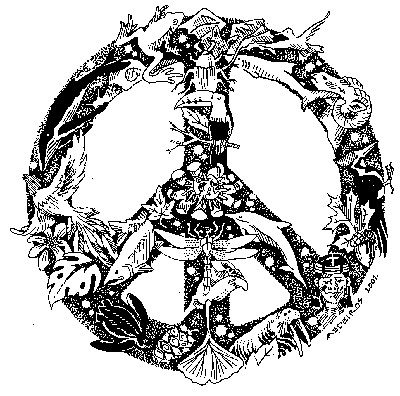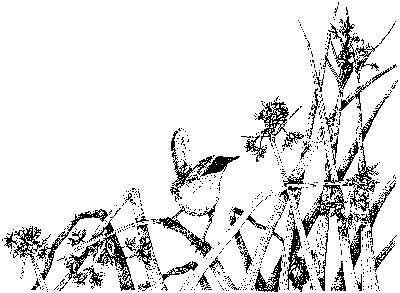


Living Lightly
By
LILLIAN VALLEE
Joy is a surprise call from
the U.S. Fish & Wildlife Service with an invitation to another adventure.
This time it is seven and a half miles of kayaking down the San Joaquin River
from Laird Park to a cove just past the Stanislaus Fishermen’s Club near
Highway 132. My partners will be from the Point Reyes Bird Observatory. Our
intrepid Fish & Wildlife guide, Lee Eastman, has led over 65 white water
rafting trips on the Colorado River, so for him this is small potatoes, but he
seems to enjoy telling us we are holding our paddles upside down.
For the first half of the
route, my partner is Lynette (responsible for identifying the Least Bell’s
Vireo on restored refuge land while doing her bird surveys), and for the second
half, Boris, a mild-mannered wildlife photographer lugging along what seems to
be enough equipment to sink a small cruise ship (just kidding, Boris, but next
time, let’s put the stuff in the middle
of the kayak?).
The water level has dropped
considerably since June, so the current is sluggish, but there is plenty to look
at: hundreds of darting swallows as we set off; a steady procession of
cormorants, wrens, hawks, owls, egrets and herons; considerable stands of button
willow and blooming wild rose; and even a beaver slapping his tail to let us
know we have intruded into his territory. A pair of terns, feeding parent and
squawking juvenile, remind us it is lunchtime.
The highlight of the trip
is coming to the confluence of the Tuolumne and San Joaquin rivers. The current
accelerates then slows down again as the mingled waters head for the Delta. Even
though the Tuolumne and San Joaquin are dammed rivers, the confluence is a
dramatic experience. Two quickening streams, timeless figure of merging,
metaphor of reconciliation--a confluence is what I would call a beautiful form.
As teachers plan another
year of coursework, they wonder what it is they can give to their students that
will last. The French writer Jean Guiton urged teachers to give students
“beautiful forms.” What these are may be impossible to define, but we
immediately know when we see or hear them. Mary Oliver’s poem “Wild Geese”
is a beautiful form as is a spouse’s solicitous question (“How can I
help?”). George Rogers Park next to Orville Wright School is a beautiful form,
in flesh as well as in aspiration, and so are the student gardens (replacing a
parking lot) at Martin Luther King Junior High in Berkeley. A friend massaging
an older friend’s swollen feet in a rest home would also qualify, equaling the
beautiful form of an old cottonwood sifting the morning light above a steaming
hot spring.
A while ago, Lee Nicholson,
Modesto poet and retired English instructor, sent me a lecture entitled “The
Irresistible Beauty of All Things” by Spanish poet Federico Garcia Lorca. I
read and reread the lecture together with another entitled “Beauty and the
Scholar’s Duty to Justice” delivered by Professor of English, Elaine Scarry.
Both lectures are treatises on beauty, the role it plays in our lives and in our
imaginations. Lorca speaks of the lacerating beauty of reality and Scarry about
the importunate beauty of justice. Reading these two lectures together is like
coming upon the confluence of two mighty rivers.
As a writer and instructor
of English, I find Lorca’s ideas familiar and true. His great love is poetry,
but Lorca’s poet does not invent, he discovers:
“I do not believe in creation but in discovery, and I don’t believe in the
seated artist but in the one who is walking the road.” In Lorca’s view the
role of the imagination is merely to discover “things already created,” for
“it does not invent, and whenever it does so it is defeated by the beauty of
reality.” And he is on the side of science against myth “for science is a
thousand times more lyrical than any theogeny.” His lecture closes with these
stirring lines: “Poetry doesn’t need skilled practitioners, she needs
lovers, and she lays down brambles and shards of glass for the hands that search
for her with love.”
Scarry acknowledges that
teachers of language and literature act on the most elusive medium, “on the
live surface of the mind”:
….teaching
well requires that we speak openly about the beauty of poems, plays, novels, and
epics not only because it is so often the beauty of the world that has prompted
the writing of those works but also because beauty lies at the heart of
education; it is among those things that ignite the desire and willingness to
learn. Beauty often comes to us through no work of our own, then leaves us
prepared to undergo a giant labor.
Scarry implies that one of
the labors our profession (English teachers) must undertake is the obligation to
speak out about injury or injustice. The perception of the absence of beauty, in
this case, presses to justice.
As
a matter of fact, our profession increases our obligation to speak out: practice
in research, access to resources, confidence and eloquence in public debate,
higher level of alertness to situations where there is a falling away from
beauty, situations where there is injury….To eliminate beauty and the
imagination from the teaching of literature is to sabotage the power of these
things to inspire students to go into the world and care to uphold or to bring
into being arrangements that diminish injury.
I am simplifying Scarry’s
carefully reasoned paper, and I am leaving out the impediments she enumerates
(“the difficulty of seeing an injury, the sense of futility of one’s own
small efforts, the shame or embarrassment of acting, and the special difficulty
of lifting complex ideas into the public space”), as well as her defense of
the much maligned research paper, yet her argument, taken together with Lorca,
also constitutes a beautiful form: there is no beauty without laceration and no
love of beauty without affirmation, without the willingness to undertake some
giant labor on its behalf.
These were my thoughts as
we glided into our safe, if slightly muddy, harbor, shoulders sore, imaginations
ablaze.
Sources:
Federico Garcia Lorca, “The Irresistible Beauty of All Things,” reprinted in
Harper’s, September 2004; and Elaine
Scarry, “Beauty and the Scholar’s Duty to Justice,” in Profession 2000.
Lillian Vallee is a Professor of Literature and Language Arts at Modesto Junior College.

![]()

![]()
